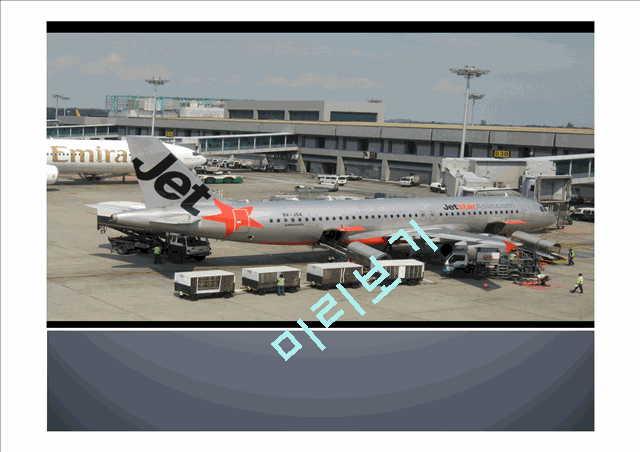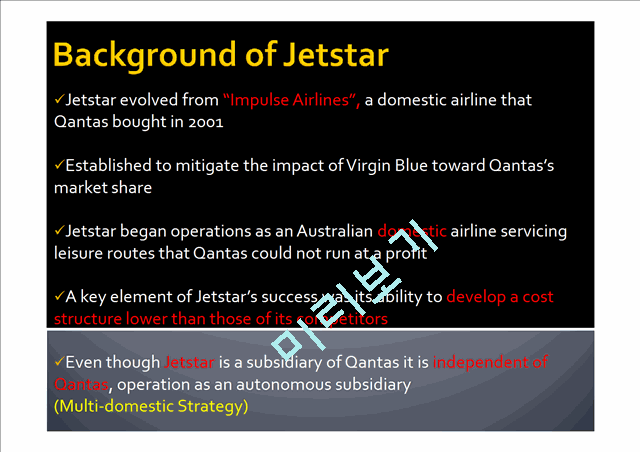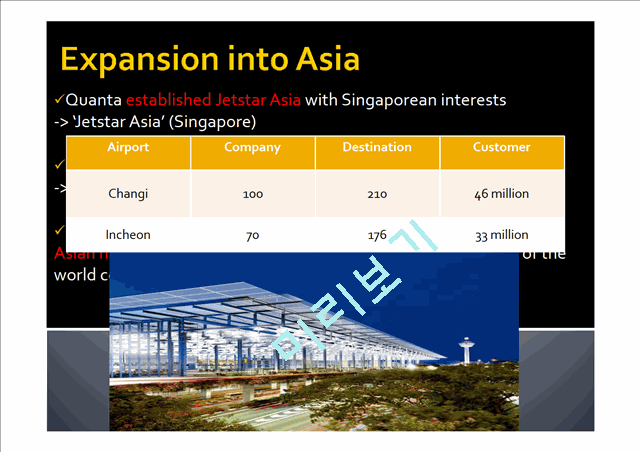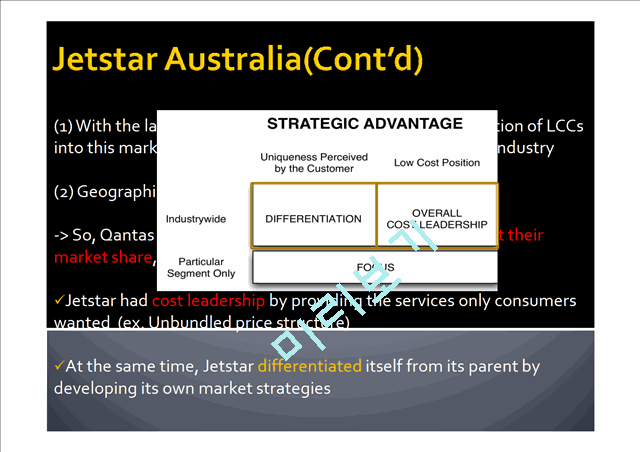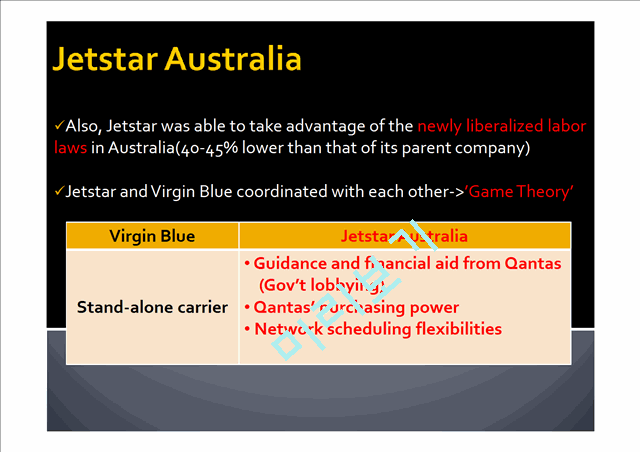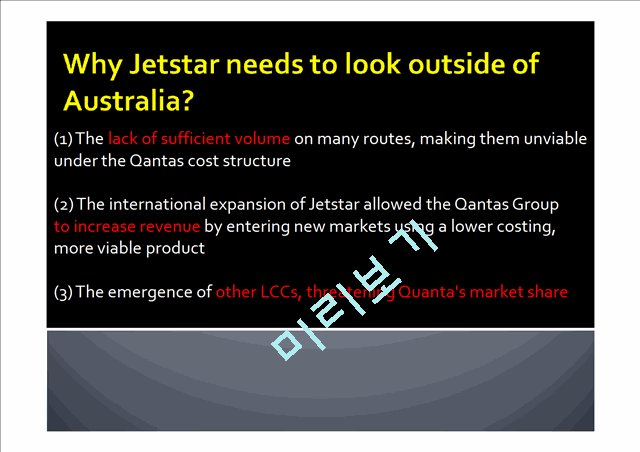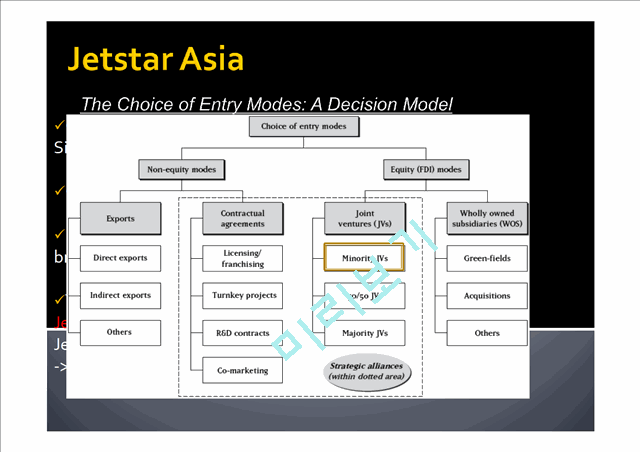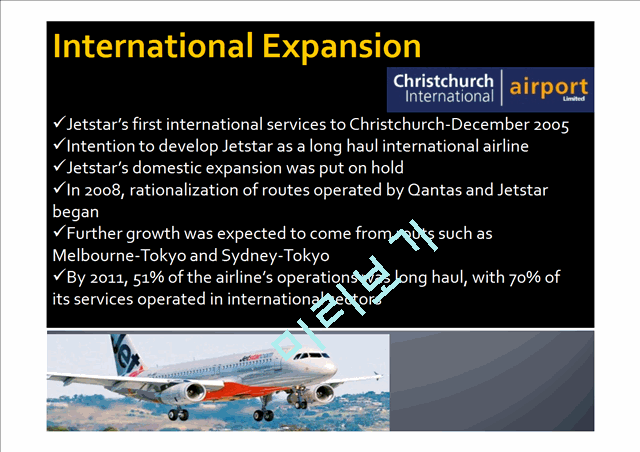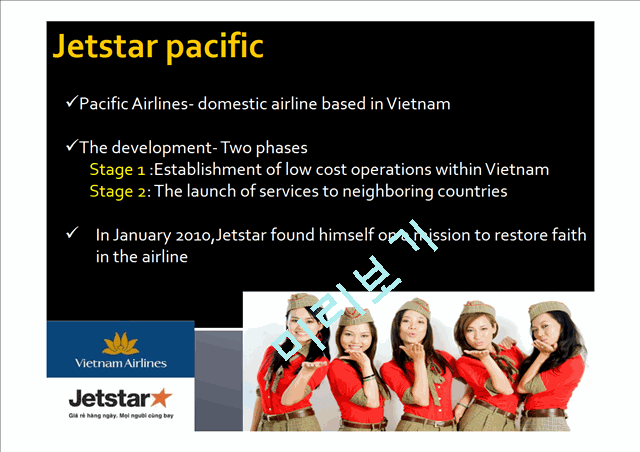|
_SLIDE_1_
_SLIDE_2_
Background of Jetstar
Aircraft
Total
Airbus A320-200
53
Airbus A321-200
6
Airbus A330-200
10
Total
69
Year of Foundation
In 2003
Hubs
Secondary Hubs
Melbourne Airport
Brisbane Airport
Fleet size
70
Destinations
35
Company slogan
Australia`s #1 Low Fares AirlineLow Fares, Good Times (Fly Away)
Parent company
Qantas Airways Ltd
Revenue
A$2,197 million (2xxx)
_SLIDE_3_
Background of Jetstar
Jetstar evolved from “Impulse Airlines”, a domestic airline that Qantas bought in 2001
Established to mitigate the impact of Virgin Blue toward Qantas’s market share
Jetstar began operations as an Australian domestic airline servicing leisure routes that Qantas could not run at a profit
A key element of Jetstar’s success was its ability to devel…(생략)
(1) With the launch of Impulse and Virgin Blue, the introduction of LCCs into this market dramatically affected the domestic airline industry
(2) Geographical advantages
(3) The emergence of other LCCs, threatening Quanta`s market share
|
tar Australia(Cont’d)
_SLIDE_6_
Also, Jetstar was able to take advantage of the newly liberalized labor laws in Australia(40-45% lower than that of its parent company)
Jetstar and Virgin Blue coordinated with each other-`’Game Theory’
Jetstar Australia
Virgin Blue
Jetstar Australia
Stand-alone carrier
Guidance and financial aid from Qantas
(Gov’t lobbying)
Qantas’ purchasing power
Network scheduling flexibilities
_SLIDE_7_
(1) The lack of sufficient volume on many routes, making them unviable under the Qantas cost structure
(2) The international expansion of Jetstar allowed the Qantas Group
to increase revenue by entering new markets using a lower costing, more viable product
(3) The emergence of other LCCs, threatening Quanta`s market share
Why Jetstar needs to look outside of Australia
_SLIDE_8_
Qantas established of a sister airline, Jetstar Asia based in Singapore
Qantas held a 49% stake in Jetstar Asia
In 2005 Jetstar Asia and ValueAir
















